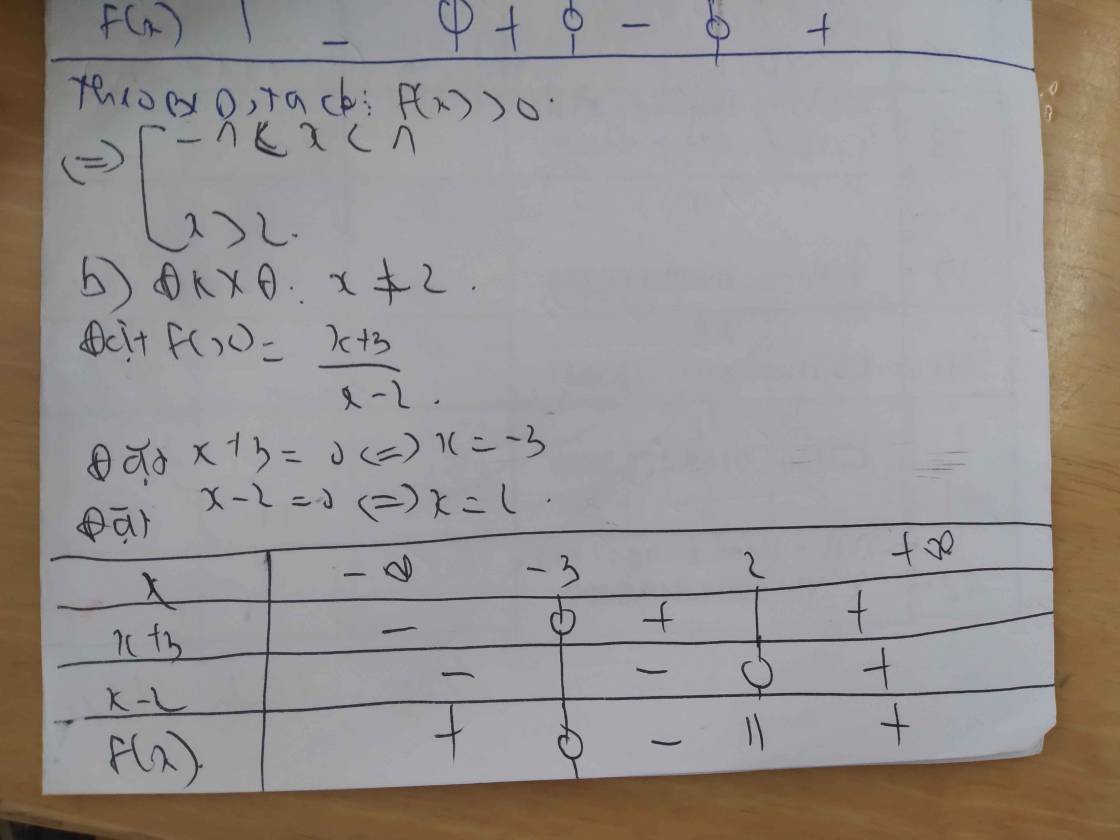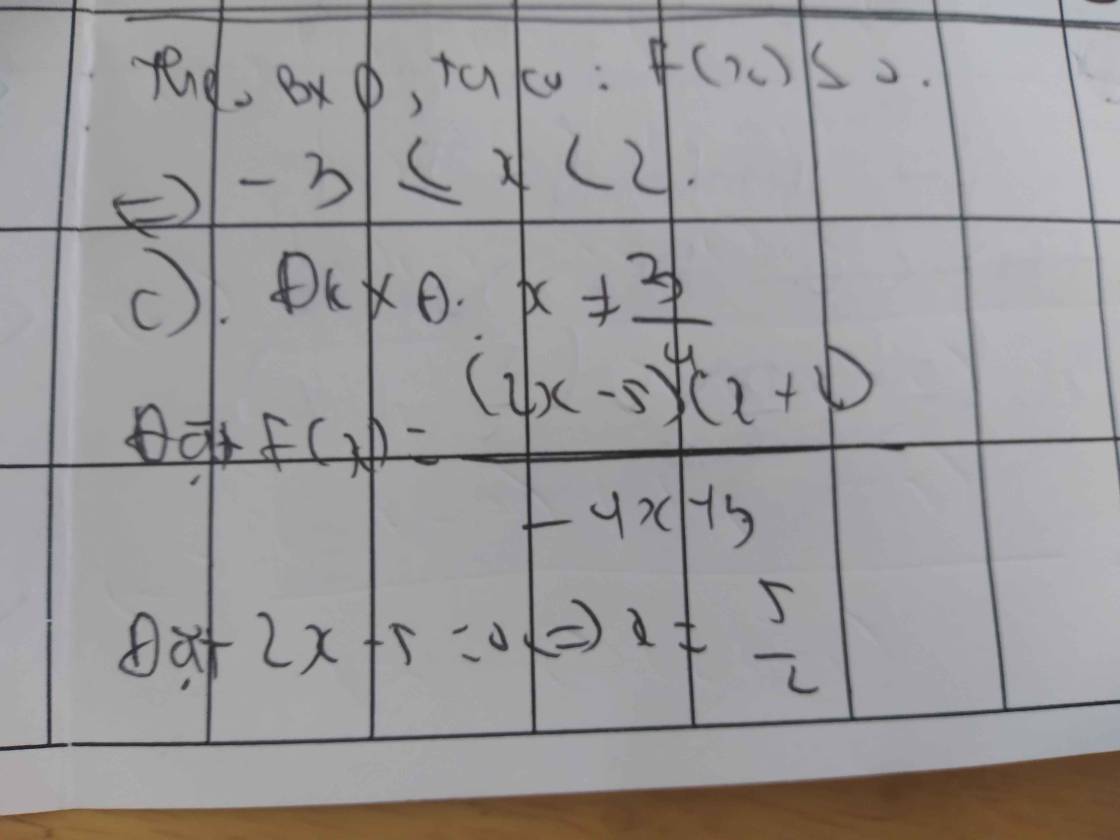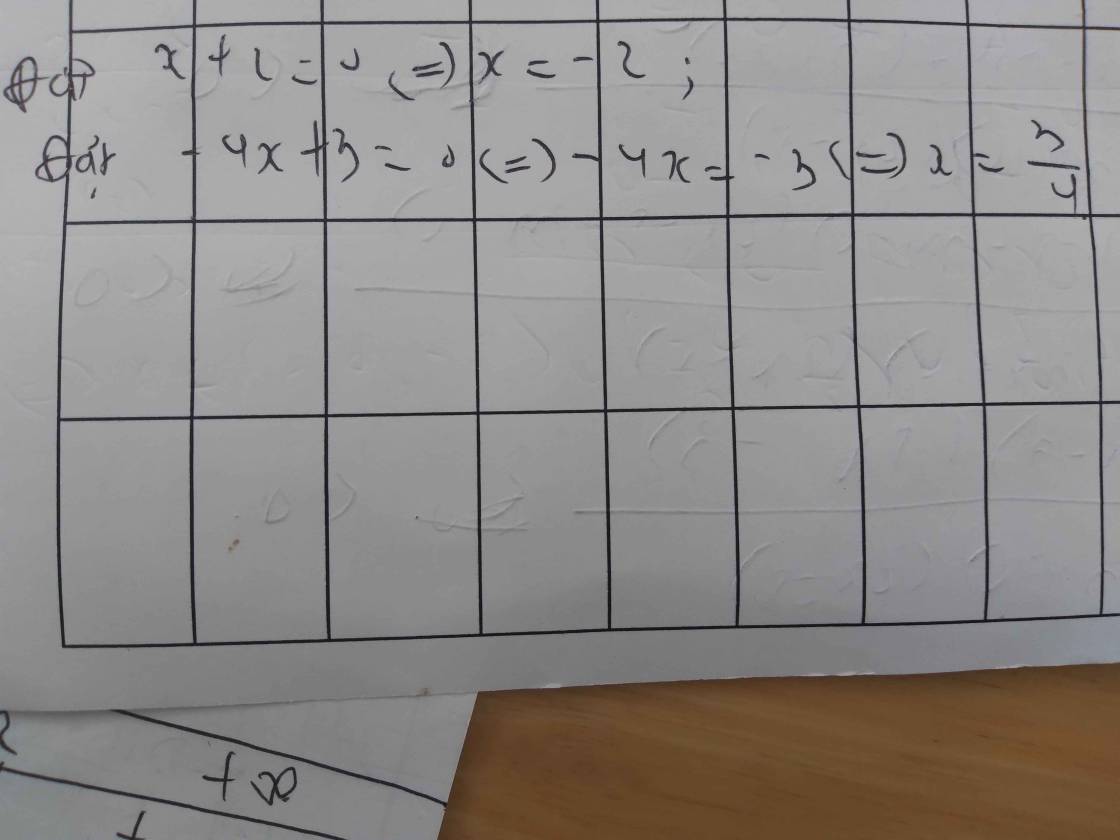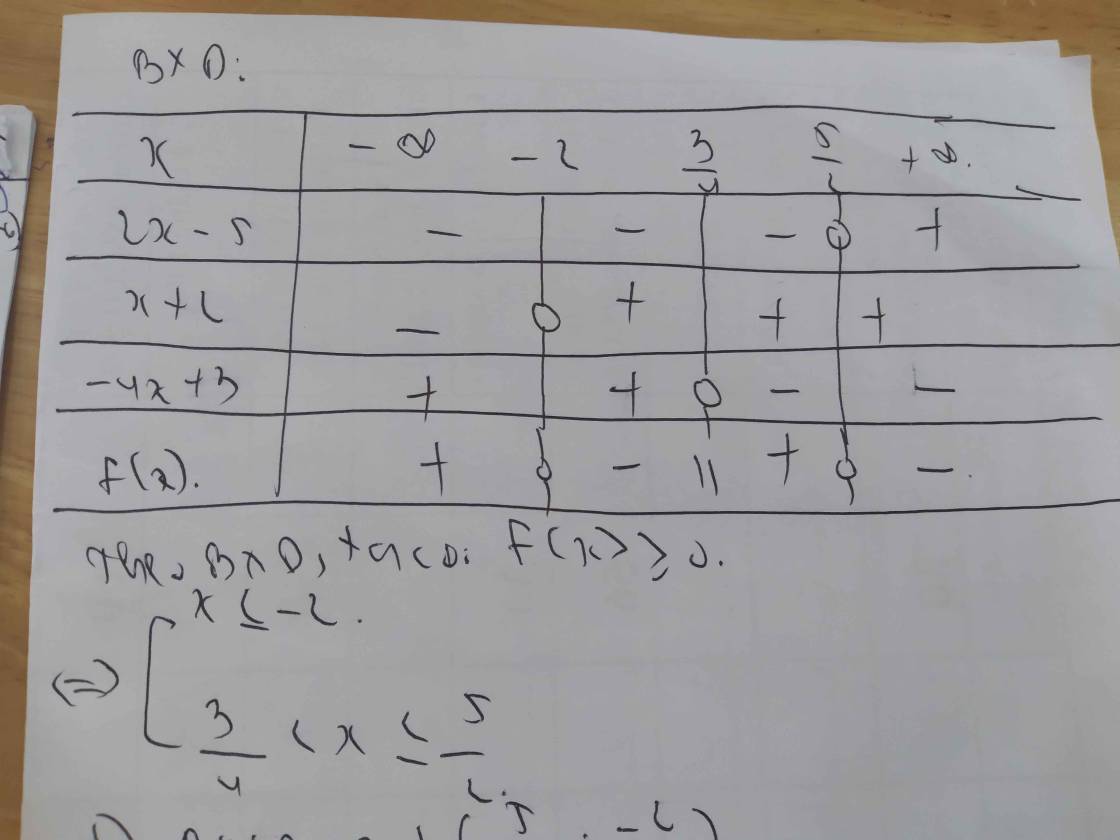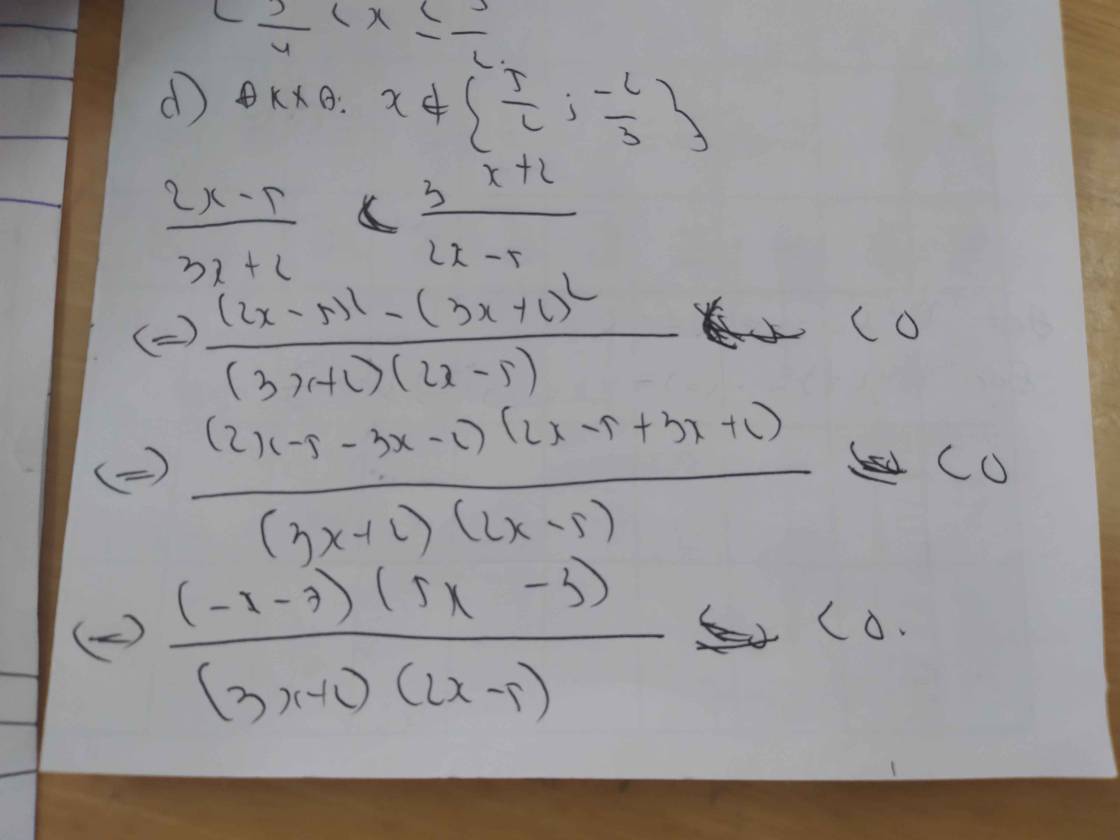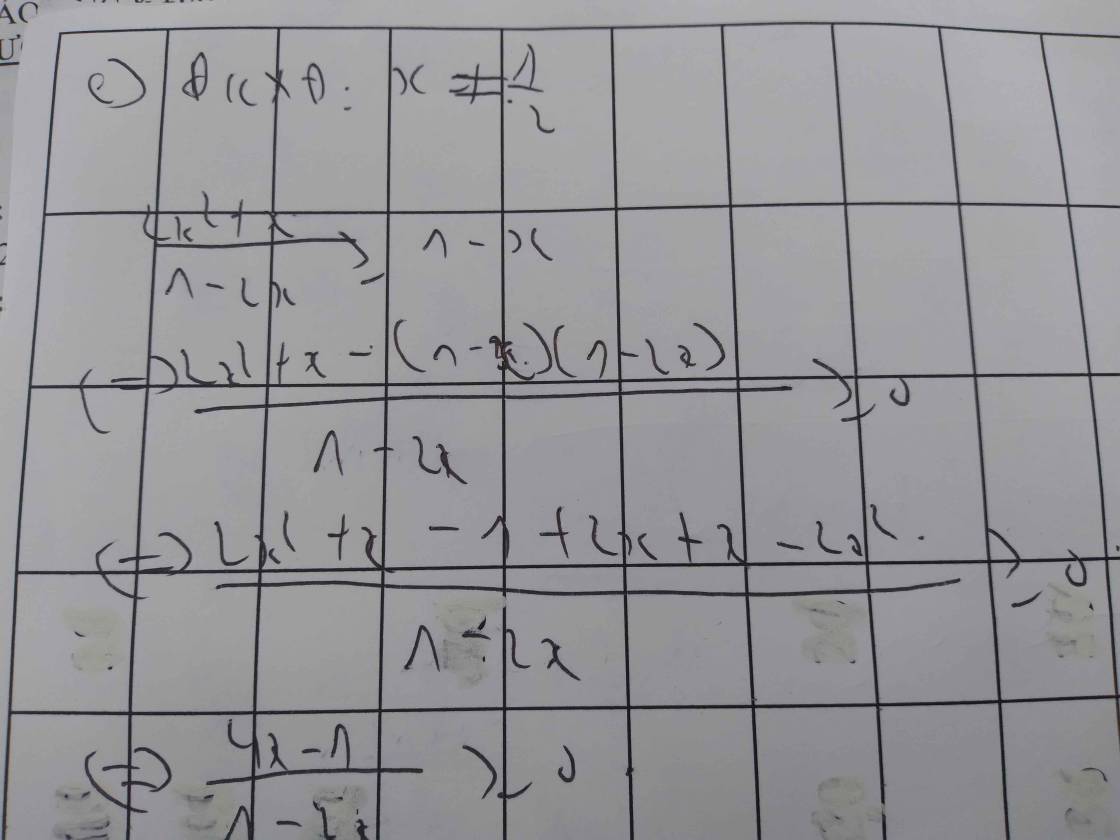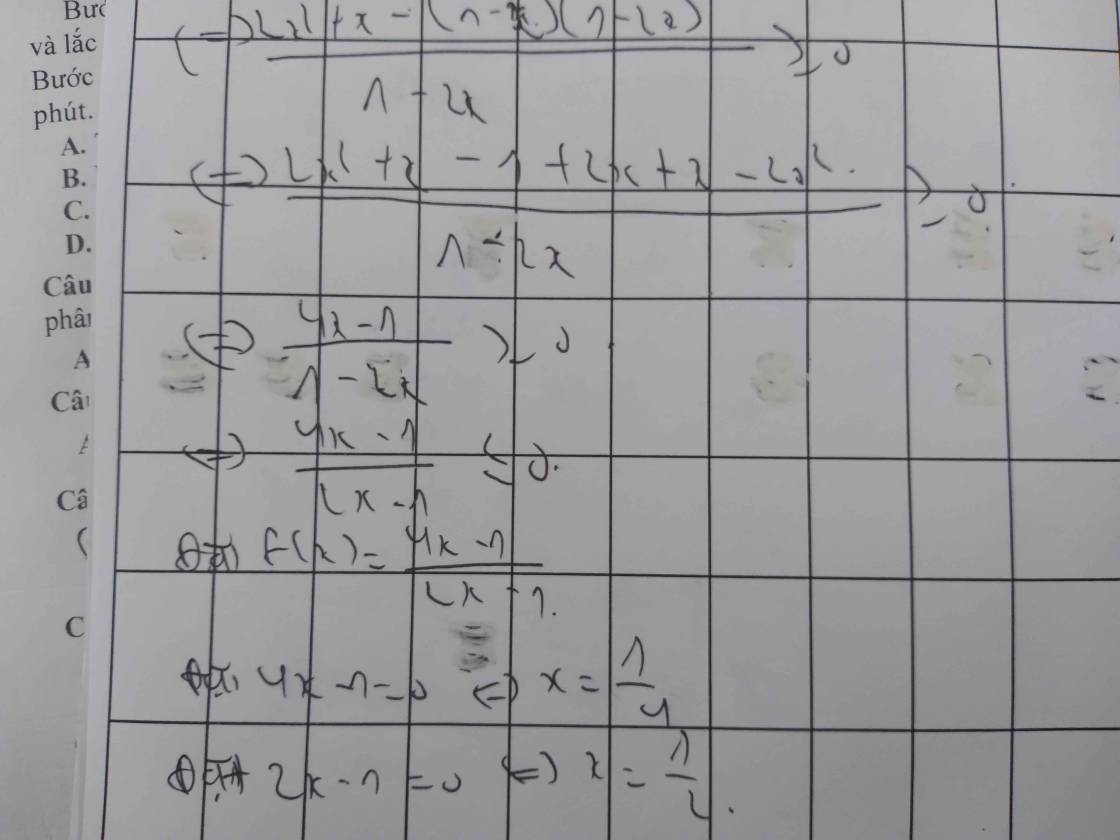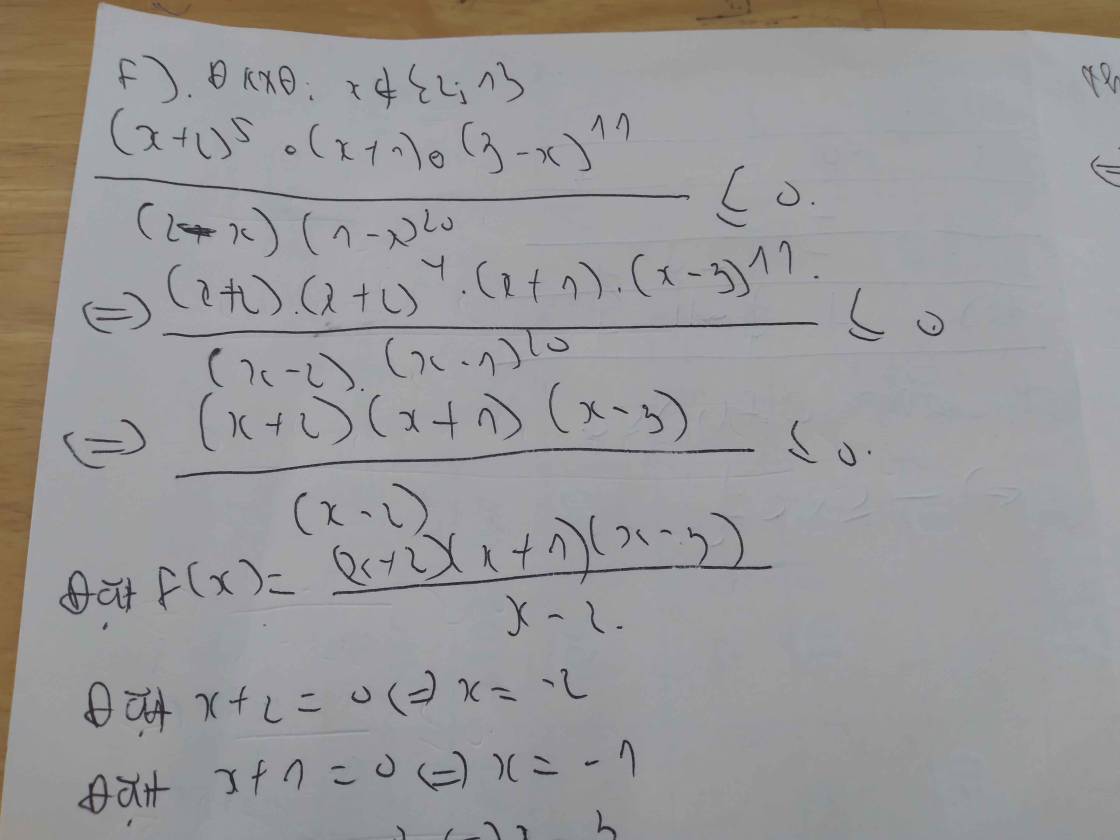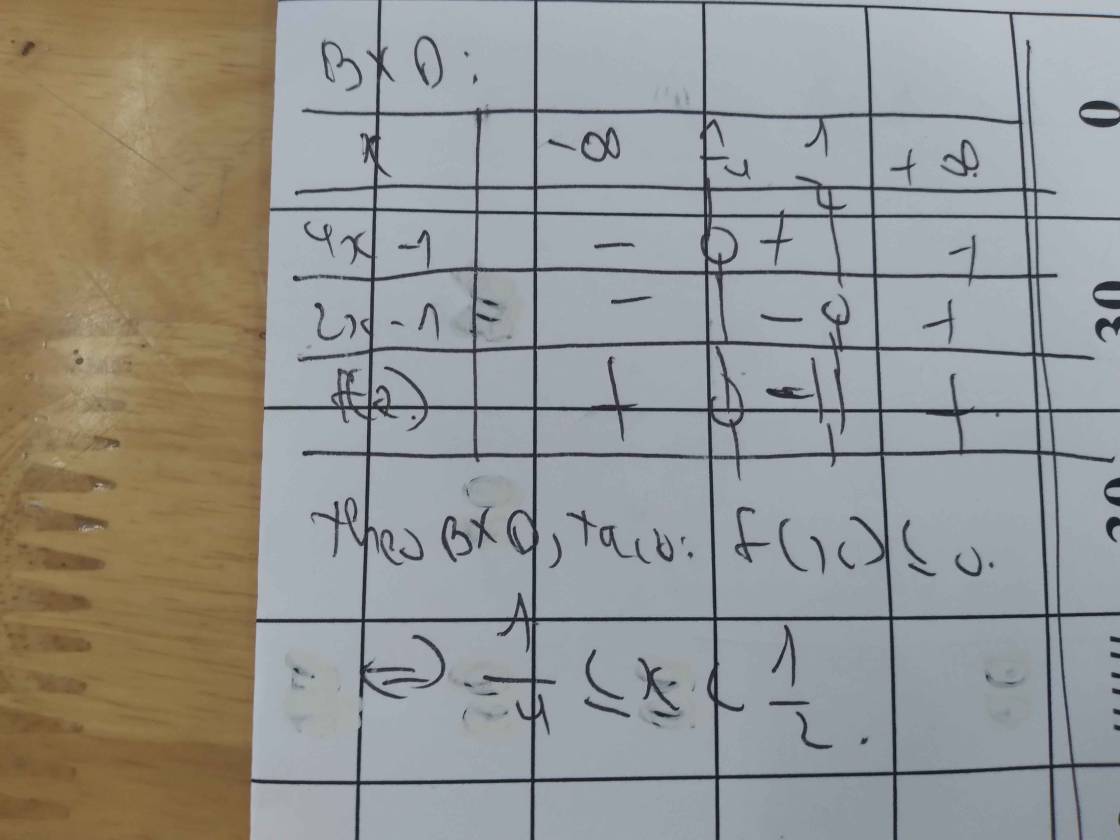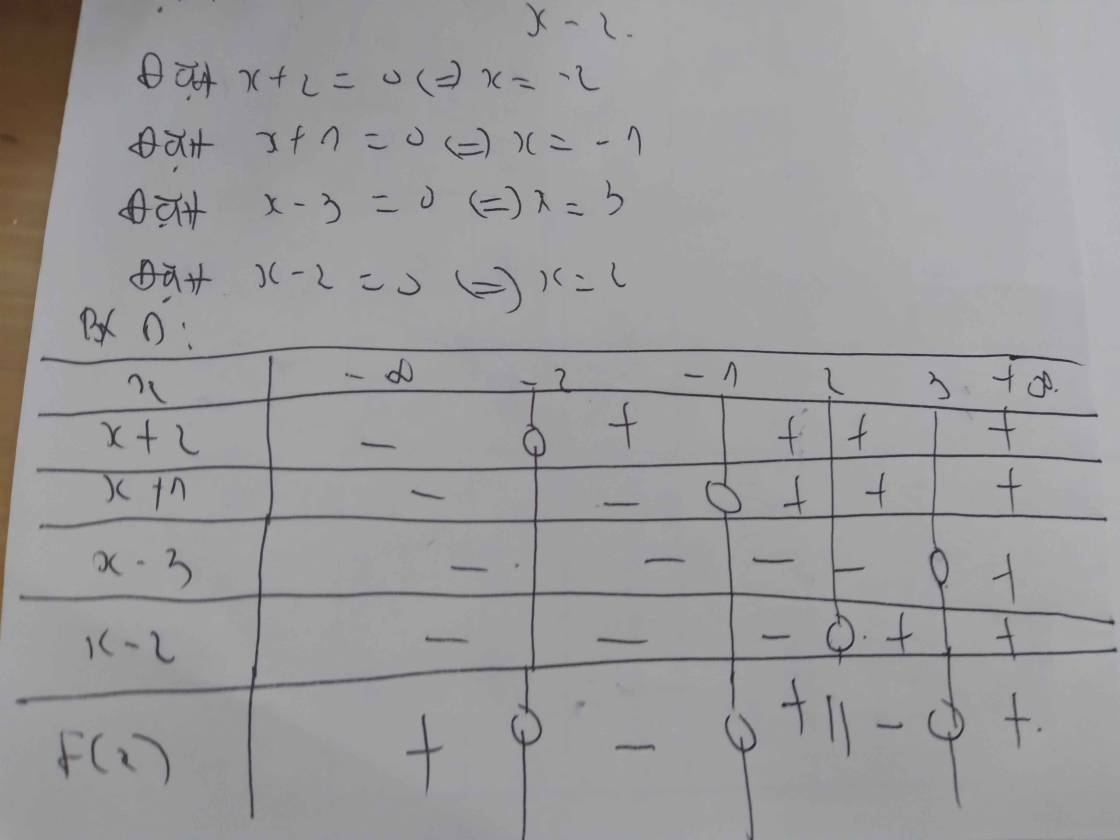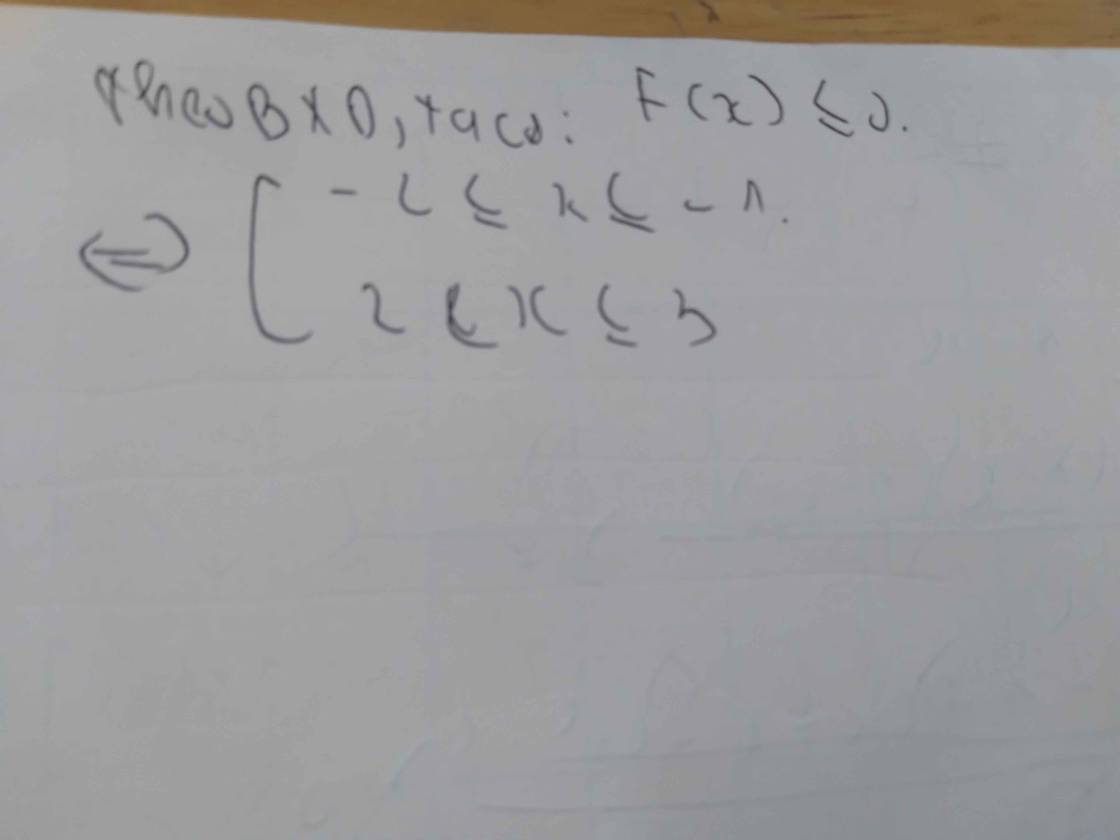
Hãy nhập câu hỏi của bạn vào đây, nếu là tài khoản VIP, bạn sẽ được ưu tiên trả lời.


a) \(\dfrac{5+x}{4-x}=\dfrac{1}{2}\)
\(\Leftrightarrow2\left(5+x\right)=4-x\)
\(\Leftrightarrow2\left(5+x\right)-\left(4-x\right)=0\)
\(\Leftrightarrow10+2x-4+x=0\)
\(\Leftrightarrow6+3x=0\)
\(\Leftrightarrow3x=-6\)
\(\Leftrightarrow x=-2\)
Vậy x=-2
b) \(\dfrac{25}{14}=\dfrac{x+7}{x-4}\)
\(\Leftrightarrow25\left(x-4\right)=14\left(x+7\right)\)
\(\Leftrightarrow25\left(x-4\right)-14\left(x+7\right)=0\)
\(\Leftrightarrow25x-100-14x-98=0\)
\(\Leftrightarrow11x-198=0\)
\(\Leftrightarrow11x=198\)
\(\Leftrightarrow x=18\)
Vậy x=18
c) \(\dfrac{3x-5}{x+4}=\dfrac{5}{2}\)
\(\Leftrightarrow2\left(3x-5\right)=5\left(x+4\right)\)
\(\Leftrightarrow2\left(3x-5\right)-5\left(x+4\right)=0\)
\(\Leftrightarrow6x-10-5x-20=0\)
\(\Leftrightarrow x-30=0\)
\(\Leftrightarrow x=30\)
Vậy x=30
d) \(\dfrac{3x-1}{2x+1}=\dfrac{3}{7}\)
\(\Leftrightarrow7\left(3x-1\right)=3\left(2x+1\right)\)
\(\Leftrightarrow7\left(3x-1\right)-3\left(2x+1\right)=0\)
\(\Leftrightarrow21x-7-6x-3=0\)
\(\Leftrightarrow15x-10=0\)
\(\Leftrightarrow15x=10\)
\(\Leftrightarrow x=\dfrac{10}{15}=\dfrac{2}{3}\)
Vậy \(x=\dfrac{2}{3}\)

1.
ĐK: \(x\ne3;x\ne-2\)
\(\dfrac{5}{x-3}+\dfrac{3}{x+2}\le\dfrac{3+2x}{x^2-x-6}\)
\(\Leftrightarrow\dfrac{5\left(x+2\right)+3\left(x-3\right)}{x^2-x-6}\le\dfrac{3+2x}{x^2-x-6}\)
\(\Leftrightarrow\dfrac{8x+1-3-2x}{x^2-x-6}\le0\)
\(\Leftrightarrow\dfrac{6x-2}{x^2-x-6}\le0\)
\(\Leftrightarrow\left\{{}\begin{matrix}6x-2\ge0\\x^2-x-6< 0\end{matrix}\right.\) hoặc \(\left\{{}\begin{matrix}6x-2\le0\\x^2-x-6>0\end{matrix}\right.\)
TH1: \(\left\{{}\begin{matrix}6x-2\ge0\\x^2-x-6< 0\end{matrix}\right.\Leftrightarrow\left\{{}\begin{matrix}x\ge\dfrac{1}{3}\\-2< x< 3\end{matrix}\right.\Leftrightarrow\dfrac{1}{3}\le x< 3\)
TH2: \(\left\{{}\begin{matrix}6x-2\le0\\x^2-x-6>0\end{matrix}\right.\Leftrightarrow\left\{{}\begin{matrix}x\le\dfrac{1}{3}\\\left[{}\begin{matrix}x>3\\x< -2\end{matrix}\right.\end{matrix}\right.\Leftrightarrow x< -2\)
Vậy ...
2.
ĐK: \(x\ne\pm2\)
\(\dfrac{1}{x^2-4}+\dfrac{2}{x+2}>-\dfrac{3}{x-2}\)
\(\Leftrightarrow\dfrac{1}{x^2-4}+\dfrac{2\left(x-2\right)+3\left(x+2\right)}{x^2-4}>0\)
\(\Leftrightarrow\dfrac{5x+3}{x^2-4}>0\)
\(\Leftrightarrow\left[{}\begin{matrix}\left\{{}\begin{matrix}5x+3>0\\x^2-4>0\end{matrix}\right.\\\left\{{}\begin{matrix}5x+3< 0\\x^2-4< 0\end{matrix}\right.\end{matrix}\right.\)
\(\Leftrightarrow\left[{}\begin{matrix}-\dfrac{3}{5}< x< 2\\x< -2\end{matrix}\right.\)
Vậy ...

Để giải các phương trình này, chúng ta sẽ làm từng bước như sau: 1. 13x(7-x) = 26: Mở ngoặc và rút gọn: 91x - 13x^2 = 26 Chuyển về dạng bậc hai: 13x^2 - 91x + 26 = 0 Giải phương trình bậc hai này để tìm giá trị của x. 2. (4x-18)/3 = 2: Nhân cả hai vế của phương trình với 3 để loại bỏ mẫu số: 4x - 18 = 6 Cộng thêm 18 vào cả hai vế: 4x = 24 Chia cả hai vế cho 4: x = 6 3. 2xx + 98x2022 = 98x2023: Rút gọn các thành phần: 2x^2 + 98x^2022 = 98x^2023 Chia cả hai vế cho 2x^2022: x + 49 = 49x Chuyển các thành phần chứa x về cùng một vế: 49x - x = 49 Rút gọn: 48x = 49 Chia cả hai vế cho 48: x = 49/48 4. (x+1) + (x+3) + (x+5) + ... + (x+101): Đây là một dãy số hình học có công sai d = 2 (do mỗi số tiếp theo cách nhau 2 đơn vị). Số phần tử trong dãy là n = 101/2 + 1 = 51. Áp dụng công thức tổng của dãy số hình học: S = (n/2)(a + l), trong đó a là số đầu tiên, l là số cuối cùng. S = (51/2)(x + (x + 2(51-1))) = (51/2)(x + (x + 100)) = (51/2)(2x + 100) = 51(x + 50) Vậy, kết quả của các phương trình là: 1. x = giá trị tìm được từ phương trình bậc hai. 2. x = 6 3. x = 49/48 4. S = 51(x + 50)

a) \(\left(x+1\right)\left(x-1\right)\left(3x-6\right)>0\)
Lập bảng xét dấu ta được kết quả :
\(Bpt\Leftrightarrow\left[{}\begin{matrix}-1< x< 1\\x>2\end{matrix}\right.\)
b) \(\dfrac{x+3}{x-2}\le0\)
Lập bảng xét dấu ta được kết quả :
\(Bpt\Leftrightarrow-3\le x< 2\)
d) \(\dfrac{2x-5}{3x+2}< \dfrac{3x+2}{2x-5}\)
\(\Leftrightarrow\dfrac{2x-5}{3x+2}-\dfrac{3x+2}{2x-5}< 0\)
\(\Leftrightarrow\dfrac{\left(2x-5\right)^2-\left(3x+2\right)^2}{\left(3x+2\right)\left(2x-5\right)}< 0\)
\(\Leftrightarrow\dfrac{\left(2x-5+3x+2\right)\left(2x-5-3x-2\right)}{\left(3x+2\right)\left(2x-5\right)}< 0\)
\(\Leftrightarrow\dfrac{-\left(5x-3\right)\left(x+7\right)}{\left(3x+2\right)\left(2x-5\right)}< 0\)
Lập bảng xét dấu ta được kết quả :
\(Bpt\Leftrightarrow\left[{}\begin{matrix}-7< x< -\dfrac{2}{3}\\\dfrac{5}{3}< x< \dfrac{5}{2}\end{matrix}\right.\)

lời giải
a) \(\left\{{}\begin{matrix}-2x+\dfrac{3}{5}>\dfrac{2x-7}{3}\left(1\right)\\x-\dfrac{1}{2}< \dfrac{5\left(3x-1\right)}{2}\left(2\right)\end{matrix}\right.\)
(1)\(\Leftrightarrow\)
\(\dfrac{3}{5}+\dfrac{7}{3}>\left(\dfrac{2}{3}+2\right)x\)
\(\dfrac{44}{15}>\dfrac{8}{3}x\) \(\Rightarrow x< \dfrac{44.3}{15.8}=\dfrac{11}{5.2}=\dfrac{11}{10}\)
Nghiêm BPT(1) là \(x< \dfrac{11}{10}\)
(2) \(\Leftrightarrow2x-1< 15x-5\Rightarrow13x>4\Rightarrow x>\dfrac{4}{13}\)
Ta có: \(\dfrac{4}{13}< \dfrac{11}{10}\) => Nghiệm hệ (a) là \(\dfrac{4}{13}< x< \dfrac{11}{10}\)

a,\(\dfrac{5x-2}{2-2x}+\dfrac{2x-1}{2}=1-\dfrac{x^2-x-3}{1-x}\)
<=>\(\dfrac{5x-2}{2\left(1-x\right)}+\dfrac{2x-1}{2}=1-\dfrac{x^2-x-3}{1-x}\)
<=>\(\dfrac{5x-2}{2\left(1-x\right)}+\dfrac{\left(2x-1\right)\left(1-x\right)}{2\left(1-x\right)}=\dfrac{2\left(1-x\right)}{2\left(1-x\right)}-\dfrac{2\left(x^2-x-3\right)}{2\left(1-x\right)}\)
=>\(5x-2+2x-2x^2-1+x=2-2x-2x^2+2x+6\)
<=>\(-2x^2+8x-3=-2x^2+8\)
<=>\(8x=11< =>x=\dfrac{11}{8}\)
vậy..........
b,\(\dfrac{1-6x}{x-2}+\dfrac{9x+4}{x+2}=\dfrac{x\left(3x-1\right)+1}{\left(x-2\right)\left(x+2\right)}\)
<=>\(\dfrac{\left(1-6x\right)\left(x+2\right)}{\left(x-2\right)\left(x+2\right)}+\dfrac{\left(9x+4\right)\left(x-2\right)}{\left(x+2\right)\left(x-2\right)}=\dfrac{x\left(3x-1\right)+1}{\left(x-2\right)\left(x+2\right)}\)
=>\(x+2-6x^2-12x+9x^2-18x+4x-8=3x^2-x+1\)
<=>\(3x^2-25x-6=3x^2-x+1\)
<=>\(-24x=7< =>x=\dfrac{-7}{24}\)
vậy..................
câu c tương tự nhé :)

1.
\(-4\le\dfrac{x^2-2x-7}{x^2+1}\le1\)
\(\Leftrightarrow\left\{{}\begin{matrix}x^2-2x-7\le x^2+1\\-4x^2-4\le x^2-2x-7\end{matrix}\right.\) (Do \(x^2+1>0\))
\(\Leftrightarrow\left\{{}\begin{matrix}x\ge-4\\\left[{}\begin{matrix}x\ge1\\x\le-\dfrac{3}{5}\end{matrix}\right.\end{matrix}\right.\)
\(\Leftrightarrow\left[{}\begin{matrix}x\ge1\\-4\le x\le-\dfrac{3}{5}\end{matrix}\right.\)
2.
\(\dfrac{1}{13}\le\dfrac{x^2-2x-2}{x^2-5x+7}\le1\)
\(\Leftrightarrow\left\{{}\begin{matrix}x^2-5x+7\le13x^2-26x-26\\x^2-2x-2\le x^2-5x+7\end{matrix}\right.\) (Do \(x^2-5x+7>0\))
\(\Leftrightarrow\left\{{}\begin{matrix}\left[{}\begin{matrix}x\ge\dfrac{11}{4}\\x\le-1\end{matrix}\right.\\x\le3\end{matrix}\right.\)
\(\Leftrightarrow\left[{}\begin{matrix}\dfrac{11}{4}\le x\le3\\x\le-1\end{matrix}\right.\)


